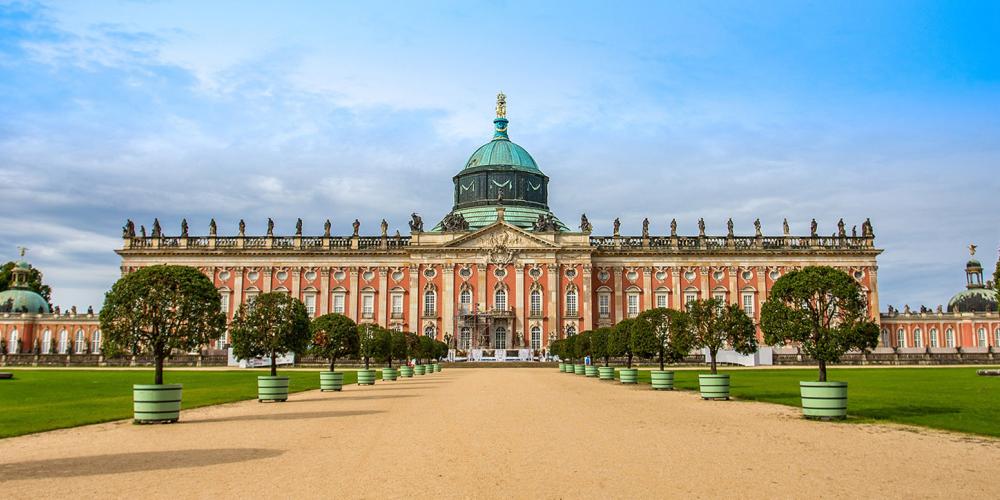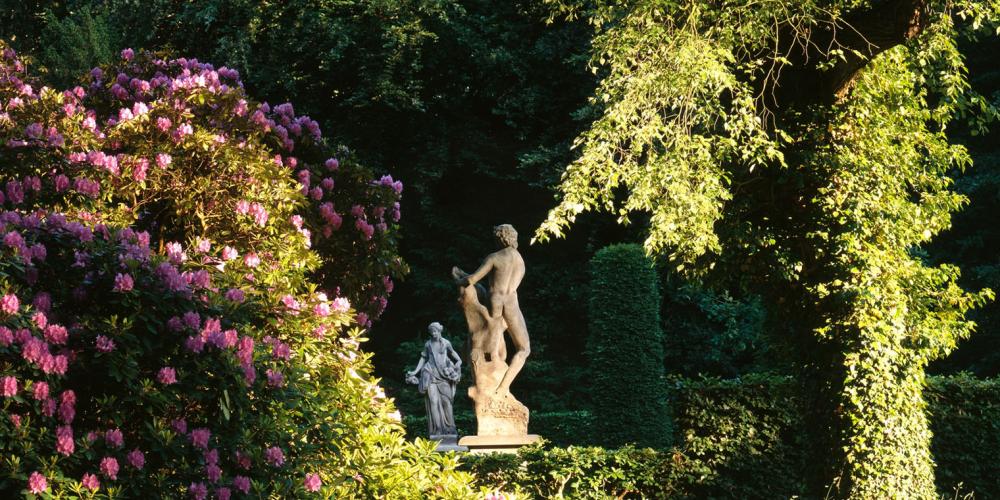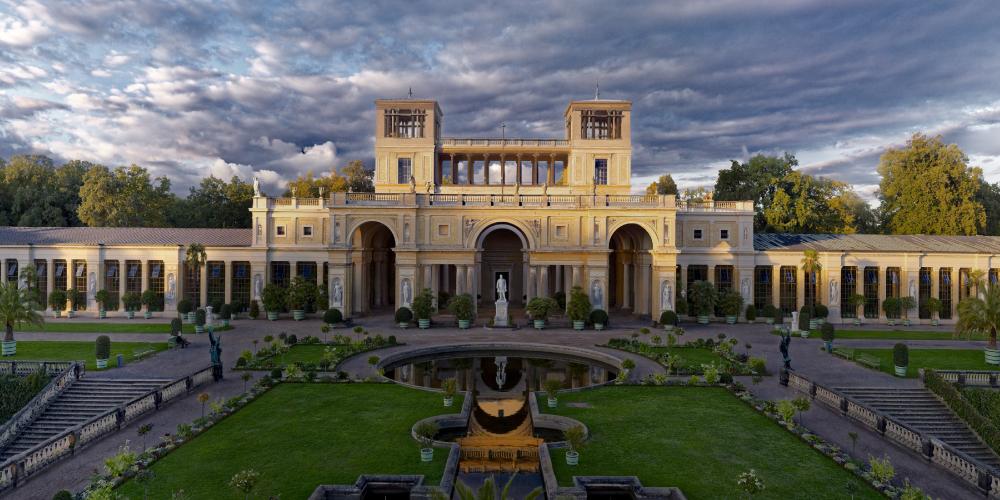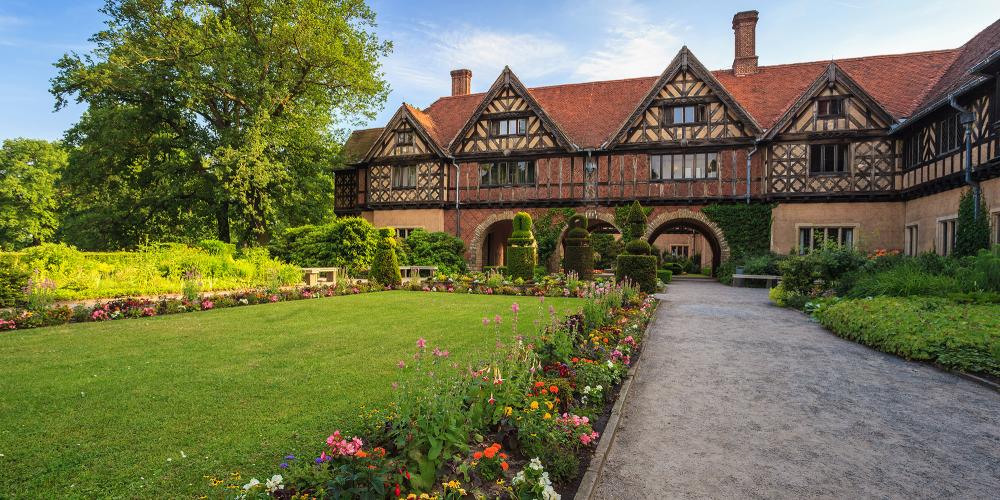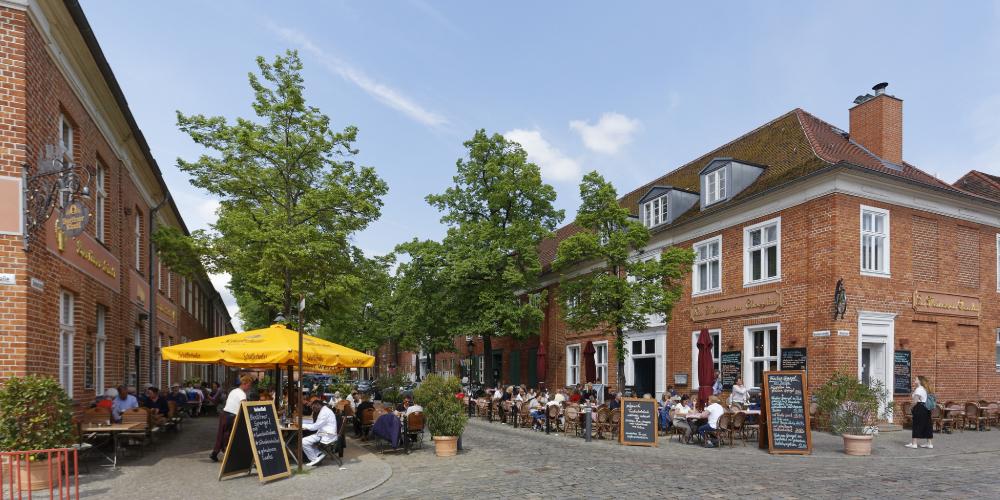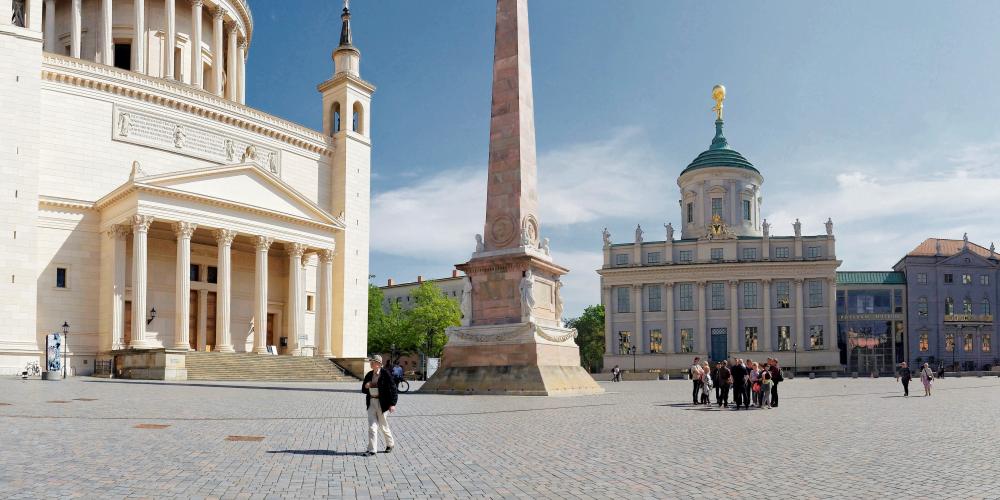Palaces and Parks of Potsdam, Germany

Not far from Berlin, the Prussian rulers embarked on the biggest legacy project of their reign. Over two centuries, they transformed Potsdam into one of the finest collections of palaces and gardens in the world. The site brought together the era's most significant architects and landscapers from Northern Germany. Within the different elements, the work of imaginative sculptors, painters, craftsmen, builders, and gardeners has been preserved.
The parks of Potsdam form an artistic whole when taken together, even though there’s an eclectic mix of styles across the landscapes. The Norse Garden with pines, the Sicilian Garden with palms, and the Paradise Garden with exotic flowers are examples of the different styles and atmospheres in close proximity. Greenhouses grow fruits and nurseries help to protect rare species. The botanical garden on the site was not founded until 1950, but it continues the tradition of caring for the natural environment.
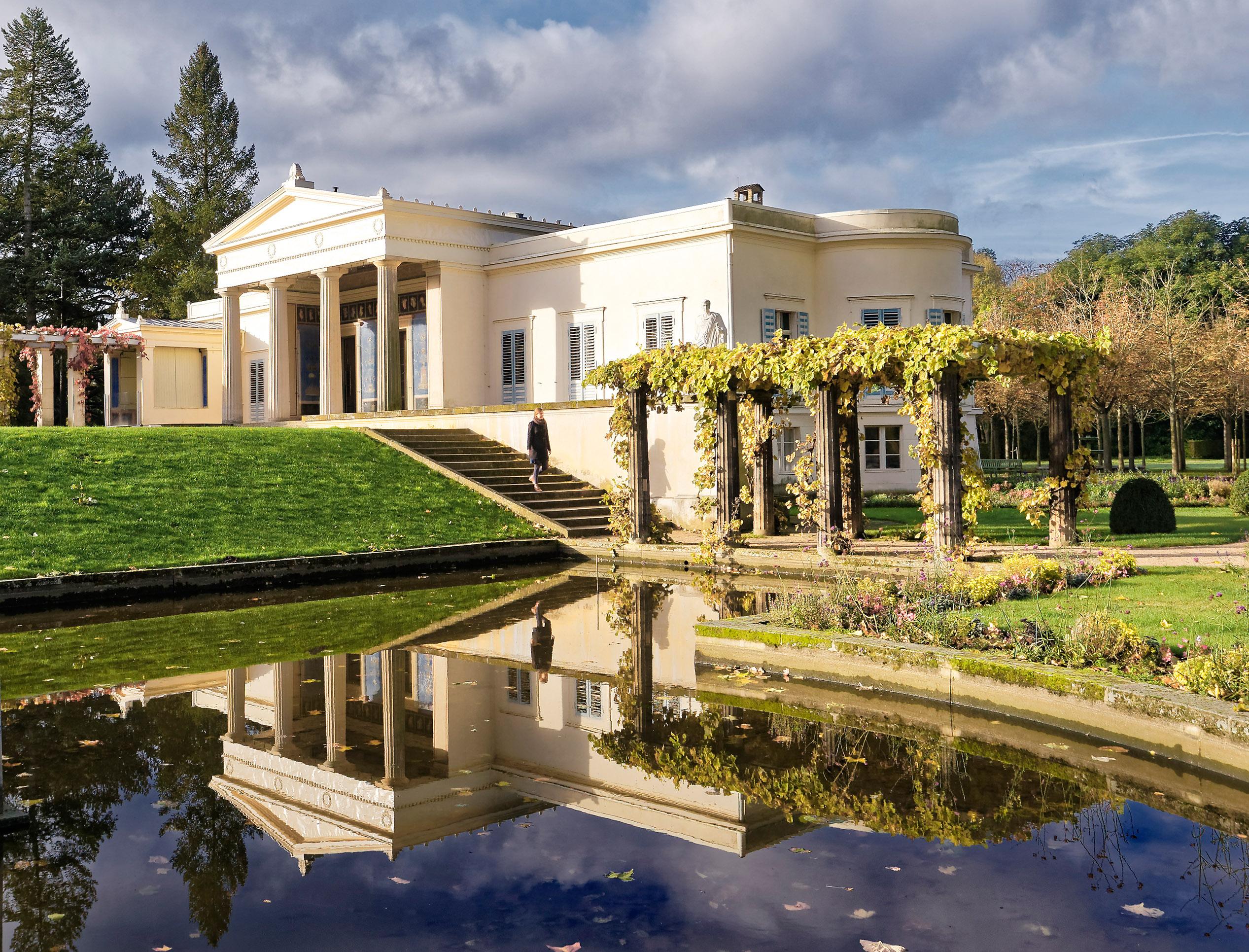
Nearly 200 years of construction and landscaping are captured within the site—it is impossible for a visitor to see everything in one day. The most popular route begins at Sanssouci Palace and its terraced garden designed by Frederick the Great to grow grapes for wine. Walking to the west, the paths lead through different areas with hedge art, ponds, and layers of garden beds. After passing through dense trees, the path intersects with the grand boulevard of grass leading to the Orangery Palace. Further on, the trees taper until the path ends at an enormous lawn in front of the impressive New Palace.
A Royal Sanctuary
Potsdam’s palaces and gardens date back to the 17th century, when Johann Moritz von Nassau-Siegen wrote to the Great Elector Frederick William: “The entire Eyland has to become a paradise." Before then, the area of Brandenburg was an uncultivated district and not yet the one the Hohenzollern family fantasised about developing. For inspiration, they envisioned Greece, Rome, Paris, the ancient world in Asia, and the era of Tudor England.
Potsdam would become an island of contemplation. Frederick the Great wanted to escape the bustling German capital of Berlin and found his sanctuary here, where he built his residence. He named it Sanssouci, which means "without worry."
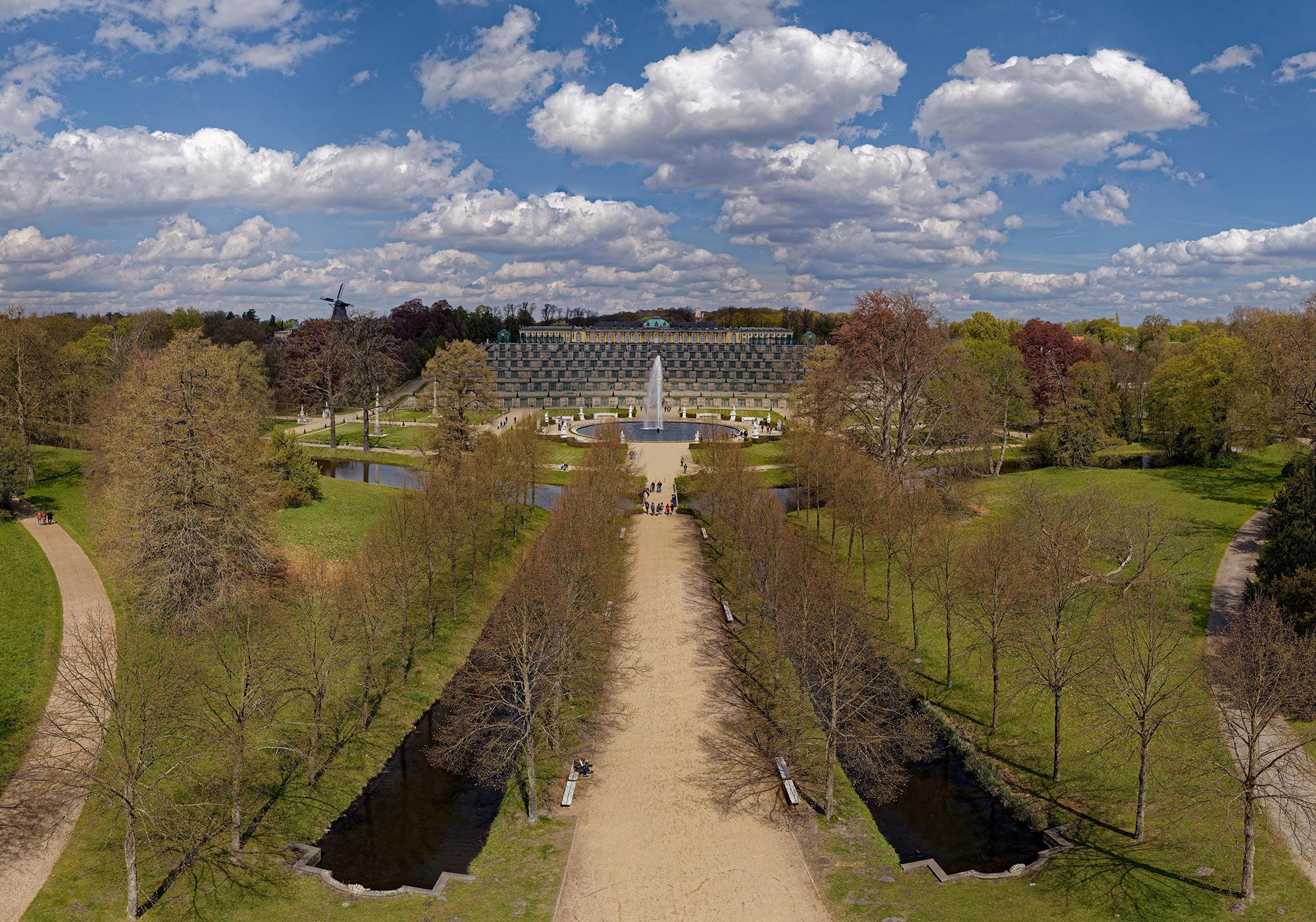
This UNESCO World Heritage site (named in December 12, 1990, with more pronounced in 1992 and 1999) encompasses 2,064 hectares with numerous parks and palaces. From Prussia to the birthplace of film, European architecture, international science institutes, and the decision to divide Germany, Potsdam is a symbol of Europe's diverse history.
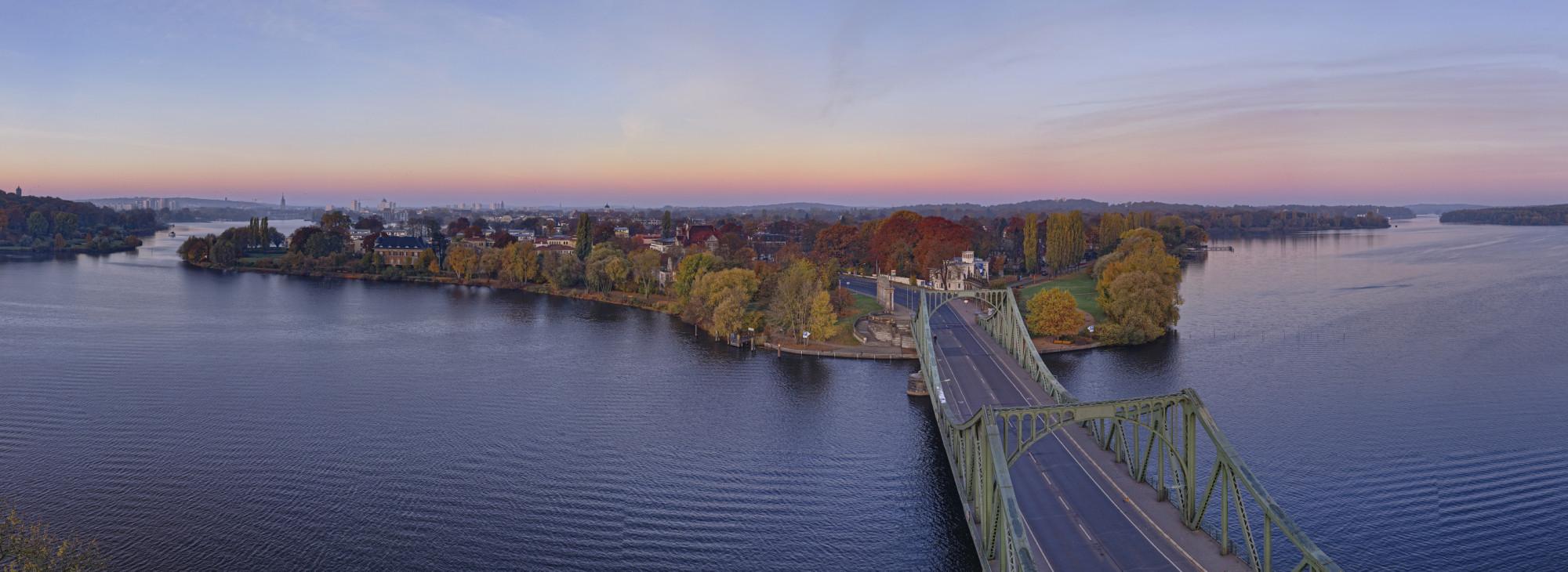
A Feast for Past and Future Senses
Each ruler set a different tone for Potsdam's magnificient grounds—and thus contributed to the overall work of art: churches, palaces, mansions, stately homes, extraordinary parks, and gardens. All of this and the Brandenburg capital is tucked along the the Havel River, creating an island town right in the center of Europe.
Today, Potsdam’s World Heritage site stretches from the Sanssouci Park to the Russian colony Alexandrovka, the New Garden, and the Babelsberg Palace and Park—an outstanding example of neo-Gothic palace architecture based on English models— with the adjacent Sternwarte and Sacrow’s Sacred Church. The cultural landscape is a collection of worldly influences from Italy, France, Russia and the Netherlands, among others.

It is important to note, however, that Potsdam is far from being stuck in the past. This is a place with a unique quality of life. One promenades here. Visitors and locals don't just eat, they indulge. Here, life is savoured: walking through the parks; eating ice cream at a parlor; and strolling through the weekly market. Potsdam is a feast for the senses. A holiday for your soul.
How to Get There
The state capital Potsdam is located in the heart of Brandenburg, with automobile access to major roads, Autobahns, and public transportation. Berlin is only half an hour by train. The Berlin-Tegel and Berlin-Schönefeld airports are near—the latter with direct, 45-minute train access to Potsdam, where there is a well-developed network of trams, busses, water taxis, and ferries day and night.
When to Visit
Potsdam is a year-round destination. The parks and gardens are most enjoyable in spring, summer, and autumn. During the winter, most palaces are closed but the New Palace, Sanssouci Palace, and the Cecilienhof Country House remain open. Please check the calendar for hours and days of operations for the palaces, museums, and other attractions ahead. As well in the winter, Potsdam hosts numerous events such as Christmas markets and illumination festivals.
How to Visit
Visitors should plan at least one full day in Potsdam. To get the best overview, join a guided sightseeing tour. To enjoy a different angle of the city, embark on a boat tour.
Parking is limited, so avoid driving when possible. Most locals get around by bicycle or public transportation.
The Berlin Welcome Card—Potsdam Edition—is recommended. This allows unlimited public transport in both Potsdam and Berlin and discounts for attractions and experiences.
